With the data entry outsourcing market projected to reach $7.7 billion by 2026, finding cost-effective vendors without sacrificing quality is crucial for maximizing your budget’s efficiency. But how can you identify the right vendor that offers both affordability and top-notch service? By exploring key factors such as pricing structures, communication channels, and quality control measures, you can ensure a successful partnership that meets your data entry needs while staying within budget constraints. Let us see how to find cost-effective data entry vendors without compramising quality.
Identifying Cost Factors
Wondering what factors influence the cost of data entry services? When considering data entry vendors, conducting a thorough budget analysis is crucial. Several elements contribute to the overall expense breakdown of data entry services. Firstly, the complexity and volume of the data to be entered play a significant role in determining costs. More intricate data requiring specialized skills may incur higher expenses. Secondly, the level of accuracy and speed required can impact pricing. Higher accuracy and faster turnaround times often come at a premium. Additionally, the technology and tools utilized by the vendor also influence costs. Advanced software and systems may result in higher prices but could improve efficiency. Lastly, the location of the vendor, whether offshore or onshore, can impact pricing due to varying labor costs and overheads. By understanding these cost factors and conducting a comprehensive budget analysis, you can make informed decisions when selecting a data entry vendor.
Comparing Offshore vs. Onshore Vendors
To determine the most cost-effective option for your data entry needs, it is essential to compare offshore and onshore vendors. When considering offshore vs. onshore vendors, here are three key factors to keep in mind:
- Location Comparison: Offshore vendors are typically located in countries where labor costs are lower, offering potential savings compared to onshore vendors based in countries with higher labor costs. However, onshore vendors may provide better communication and proximity benefits.
- Cost Efficiency: Offshore vendors often offer lower hourly rates due to reduced operating costs, making them a more budget-friendly option for large-scale data entry projects. On the other hand, onshore vendors may excel in quality control and adherence to data security regulations.
- Vendor Selection, Budget Considerations: When choosing between offshore and onshore vendors, consider the specific requirements of your project. Offshore vendors can be a cost-effective choice for routine data entry tasks, while onshore vendors may be more suitable for sensitive or complex projects that require closer collaboration. Evaluate your budget constraints alongside the quality and communication needs of your data entry project to make an informed decision.
Negotiating Competitive Pricing
When negotiating competitive pricing with data entry vendors, it’s crucial to develop effective pricing negotiation strategies to secure the best deals. Cost-saving tactics such as bulk discounts or long-term contracts can help drive down expenses without compromising quality. Balancing quality and price is key to ensuring that you get the most value for your investment in data entry services.
Pricing Negotiation Strategies
In securing cost-effective data entry vendors, one crucial aspect to master is the art of negotiating competitive pricing. When delving into pricing negotiation strategies, consider the following:
- Budget Management: Clearly outline your budget constraints and desired pricing structure to potential vendors. By being transparent about your financial limitations, vendors may be more willing to offer competitive pricing to win your business.
- Cost Analysis: Conduct a thorough cost analysis to understand the pricing structures of different vendors. This will empower you to leverage this information during negotiations and ensure that you are getting the best possible deal without compromising on quality.
- Price Comparison and Payment Terms: Compare pricing quotes from multiple vendors to identify the most cost-effective option. Additionally, negotiate favorable payment terms such as discounts for early payments or installment options to further optimize your costs.
Cost-Saving Tactics
Understanding the nuances of cost-saving tactics when negotiating competitive pricing with data entry vendors is paramount. When aiming for cost efficiency, start by setting clear budget considerations. Before approaching vendors, determine the maximum amount you are willing to spend and where you can potentially save costs without compromising quality. During vendor selection, prioritize those who offer competitive pricing while ensuring quality assurance measures are in place.
To optimize prices, consider negotiating volume discounts for large quantities of data entry tasks. Vendors are often willing to provide discounts for bulk orders, which can result in significant cost savings in the long run. Additionally, explore the possibility of long-term contracts with vendors to secure lower rates over an extended period.
Quality-Price Balance
To achieve a successful quality-price balance when negotiating competitive pricing with data entry vendors, it is crucial to delve into the specifics of their service offerings. Here are three key points to consider:
- Budget Allocation: Clearly define your budget constraints and communicate them to the vendors. This will help them tailor their proposals to fit within your financial limits while still providing quality services.
- Cost-Effective Solutions: Look for vendors that offer cost-effective data entry solutions without compromising quality. This could include automation tools, bulk pricing discounts, or efficient workflows that reduce manual labor costs.
- Negotiation Strategies: Engage in open discussions with vendors about pricing. Explore options like long-term contracts for better rates, volume-based discounts, or bundling services for a more competitive overall price.
Evaluating Service Packages
When evaluating service packages for data entry vendors, it’s crucial to compare the offerings from different providers. Focus on finding a balance between quality and affordability, ensuring that the chosen vendor meets your specific needs while staying within budget constraints. By carefully assessing the service packages available, you can make an informed decision that maximizes value for your data entry requirements.
Service Package Comparison
Comparing service packages from different data entry vendors is crucial in ensuring you are getting the most value for your investment. Here are three key factors to consider when evaluating service packages:
- Pricing Transparency: Look for vendors that provide clear pricing information upfront, detailing the costs associated with their service packages. This transparency helps you understand what you are paying for and avoid hidden fees.
- Service Level: Assess the level of service offered in each package. Consider factors such as turnaround time, accuracy rates, and customer support availability. Opt for a vendor that aligns with your quality requirements and service expectations.
- Cost Breakdown and Value Proposition: Examine the cost breakdown of each package to determine where your money is being allocated. Evaluate the value proposition of each vendor to ensure that the services provided justify the cost. This analysis will help you choose a vendor that offers the best balance between cost and quality.
Quality vs. Affordability
As you evaluate service packages from different data entry vendors, one of the key considerations is finding the right balance between quality and affordability. To navigate this balance effectively, it’s crucial to consider your budget constraints. While seeking affordability is important, it’s equally vital not to compromise on the quality of the data entry services you receive.
When assessing service packages, focus on the price performance tradeoff. Look for vendors that offer competitive pricing without sacrificing the quality of their work. Some vendors may provide a range of packages tailored to different budget levels, allowing you to choose one that best fits your financial parameters while maintaining high standards of service.
Understanding Hidden Costs
Curious about where your budget may be leaking funds when it comes to data entry vendors? Understanding hidden costs is crucial for effective budget management and expense analysis. Here are three key areas to consider:
- Overtime Charges: Watch out for vendors who bill extra for overtime work. Ensure that the agreed-upon rates cover any potential extra hours to avoid unexpected costs.
- Error Correction Fees: Some vendors may charge additional fees for correcting errors made during data entry. It’s essential to clarify how these fees are structured and if there are any limits to prevent excessive charges.
- Data Security Costs: Protecting sensitive information is vital, but some vendors may add extra charges for enhanced data security measures. Evaluate these costs upfront and ensure they align with your budget and security requirements.
Checking for Free Trials
To assess the suitability of data entry vendors without committing to long-term contracts, consider checking for free trials. Trial assessments can provide valuable insights into the quality of service offered by different vendors. During these trials, you can compare the efficiency, accuracy, and overall performance of each vendor to determine which best meets your needs.
Quality assurance is essential when selecting a data entry vendor, and free trials offer an excellent opportunity to evaluate this aspect firsthand. By testing the services provided during the trial period, you can ensure that the vendor meets your quality standards before making a long-term commitment. Additionally, budget considerations play a crucial role in vendor selection. Free trials allow you to assess the value offered by each vendor in relation to the cost, helping you make an informed decision that aligns with your budgetary constraints.
Assessing Long-Term Savings
Considering the long-term savings potential when selecting a data entry vendor is crucial for optimizing your budget and maximizing efficiency. To assess the long-term savings effectively, follow these key steps:
- Budget Analysis: Conduct a thorough budget analysis to understand your current data entry expenses and identify areas where potential savings can be achieved by outsourcing to a cost-effective vendor. Look at your historical data entry costs, including labor, software, and maintenance expenses, to make informed cost projections for the future.
- Expense Management: Evaluate how partnering with a data entry vendor can streamline your expenses and lead to long-term cost savings. Consider the vendor’s pricing structure, scalability options, and efficiency in handling data entry tasks to ensure effective expense management over time.
- Financial Planning: Develop a comprehensive financial plan that takes into account the cost savings achievable by outsourcing data entry services. Create a roadmap for allocating resources efficiently and maximizing the benefits of working with a reliable vendor for improved financial planning.
Frequently Asked Questions
How Can I Ensure Data Security When Outsourcing Data Entry Services?
To ensure data security when outsourcing data entry services, you must prioritize data encryption and secure protocols. It’s crucial to vet vendors thoroughly, ensuring they adhere to stringent security measures to protect your sensitive information effectively.
What Level of Customer Support Can I Expect From the Vendor?
When choosing a vendor, consider the level of customer support. You can expect prompt response times and technical assistance. Evaluate their communication channels and availability. Ensure they offer the support needed to address any queries or issues efficiently.
Are There Any Additional Fees for Rush or Urgent Data Entry Requests?
When it comes to rush or urgent data entry requests, you should inquire about potential rush fees and any hidden costs that might impact the pricing structure. Understanding these details upfront can help you budget effectively.
Can I Request Customization or Specific Requirements for My Data Entry Tasks?
Yes, you can specify customization options and specific requirements for your data entry tasks. Vendors often offer tailored solutions to meet your unique needs, ensuring that your data is handled according to your preferences and guidelines.
What Measures Does the Vendor Have in Place for Disaster Recovery and Business Continuity?
When selecting a vendor, ensure they have robust disaster recovery and business continuity plans in place. Ask about redundancies, data backups, and protocols for emergencies. Understanding their measures for disaster recovery and business continuity is crucial for your data security.




